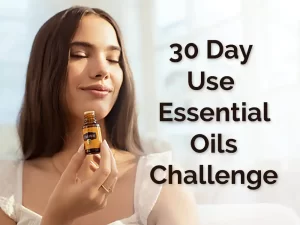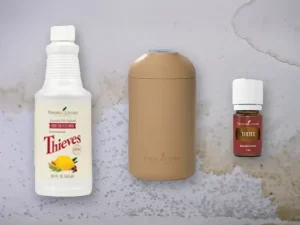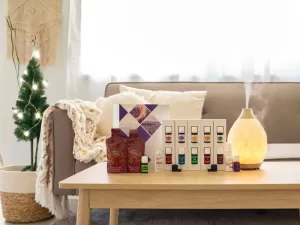I’ve had many people ask me, “Which is the best essential oil brand?”
My answer is always the same – Young Living. 100% without a doubt.
And when I say they’re the best essential oils, how do I really know that? Simple! I’ve seen how they’re grown and produced with my own two eyes, time and time again, at multiple farms.
I’ve had people from other companies ask me to try their essential oils in the hope that I will switch. And I have tried other brands. But, none smell as potent or like the plant they come from as Young Living’s essential oils do. Plus, none of these companies have such extensive testing or innovation as Young Living either.
Is Young Living ethical?
Young Living as a company are definitely ethical. They do right – not only by their customers, members and staff, but by the Earth too. Mary Young is a mother like me. She wants to see not only her company around for future generations, but the Earth too. Harvesting plants can be unsustainable and many companies pillage the earth, putting profit before sustainability. Not Young Living.
Other companies even use claims like ‘all our oils come from wild-crafted plants’ yet they sell Orange oil. Find me a wild orange tree!
Some essential oil species are close to extinction
Some essential oils come from trees that are now close to becoming extinct because they have been over-harvested. This is why Young Living no longer source their Sandalwood from India, but instead opt for Australian and Hawaiian Sandalwood. Young Living also no longer sell Rosewood or Spikenard because they can’t source either from a sustainable grower.
A few years ago they did buy some of these essential oils unknowingly from a dodgy source. When they found this out they actually dobbed themselves in and paid a huge fine. Other companies try to spin this. You can see in the actual penalty notice online that they did report it themselves. Young Living have changed their sourcing practices to make sure this type of thing never happens again. Mind you, some of these other companies are still selling these species of essential oils. So where are they getting them from?
While I do believe Young Living’s essential oils are the best on the market, I know they weren’t the first company and they aren’t the only company. There have been essential oil companies around for over a hundred years in Europe. Young Living is just 25 years old. I think when people say Young Living is the oldest, they mean that Young Living were around before the other essential oil companies which distribute via network marketing.
I believe that the other companies that do use network marketing as a vehicle to distribute their essential oils are more about the network marketing, than they are about the essential oils. Gary Young used to say he made his products for a purpose and not for profit.
Young Living owns their own farms. They have prided themselves on knowing exactly what seeds, soil, environment, temperature, altitude, humidity and cultivation practices each plant likes. This ensures that the essential oils they produce have the right amounts of each constituent needed to create the highest quality essential oil. This not only goes for their own farms but for their partner farms and seed to seal supplies too.
Are Young Living essential oils organic?
So are they organic? People ask me this question frequently too. You’ll read online that many distributors believe Young Living’s essential oils are above organic. I for one, having owned a macadamia farm, know a bit about organic certification on farms. Different countries have different organic standards.
The system is really broken in some countries and so ‘organic status’ doesn’t mean much. You can use nasty herbicides and pesticides on these farms so long as it is a certain distance from the so called ‘organic crop’. For me that is not good enough. I don’t want to risk wind drift or contamination of the water supply by these chemicals.
Young Living source their essential oils from all over the world. They grow and produce many of their essential oils in countries in Asia, Africa and South America. In these countries there is either no organic certification or if there is, then it is subject to corruption.
Young Living have their own farms, as well as partner farms on every continent except Antartica. Rather than have to seek organic certification from each countries they are in, they implement their own quality assurance processes. Then they let you be the judge by opening their doors and allowing you to visit. You can see that there are no sprays, nasty pesticides, herbicides or GMO. Seeing sure is better than just believing.
How do you determine the quality of essential oils?
It’s not just the way they grow the plants that contributes to the quality. It’s also how you distill them. Different plants like different temperatures, pressure and even different distillation times. Young Living has spent 30 years collecting data on this for the vast number of essential oils they produce. This database is extensive. Unless a company has its own farms and has been in existence for as long as Young Living or longer, then how can they claim to know more than Young Living does about producing the world’s best essential oils?
Gary Young studied the cultivation, distillation and testing processes under some of the world’s master distillers. He perfected this art. And it is an art. I have been there when Young Living have distilled lots of different essential oils. It isn’t just a ‘wham bam thank you ma’am’ kinda operation. It is very precise.
So when I see YouTube videos of how some essential oil companies distill their oils in rusty cookers… Or use dirty water to create the steam in their cookers to produce their essential oils… I laugh at the word ‘pure’ on their labels. How can these be pure if the water they use is not? And what about claims of wild-crafting?

How do Young Living grow their plants and produce their essential oils?
Let’s look at some of the things Young Living does. To put this into context, I’ve visited seven of Young Living’s farms across the world – from Croatia to Ecuador to the USA to France. So this list isn’t based on some ‘company advertising blurb. It’s based on my own experience of visiting the farms.
Here’s what I discovered:
- Young Living prepares their soil for years before planting crops for the first time. Then they sow the plants into Young Living owned farms or Young Living partner farms that have passed Young Living Standards.
- Young Living carefully monitors the plants and scrutinises and tests the soil at every stage of the plant’s life.
- Worm castings from worm composting are used on the farms . I saw this on my visit to their farm in Ecuador (you can read more about it here). They mix the plant material that comes out of the cookers with the goat manure from the goats on the farm. This is then fed to the worms in the worm farms.
- They use composted organic plant materials and spring or aquifer water on the plants (you will not find any town water ever used).
- All the farm workers love what they do. To qualify to work with the plants a person cannot have any coarse or bad language. Young Living only allows employees who love their jobs to work with the oils. Gary used to tell them not to go out into the fields if they were having a bad day.
- Quality controllers visit the farms regularly to ensure they comply with the strict Young Living standards. Standards that not only apply to how the essential oil is grown but to how it is harvested, distilled and tested. All of these can impact on the quality of an essential oil.
- For Young Living to pursue any organic certification it would greatly diminish the value of essential oils. This certification cannot be and should not be applied to a true essential oil that requires much more than an organic label would dictate.
Don’t be fooled by these Essential Oil Buzz Words
So, if that’s what Young Living does, what do other companies do?
I’m not going to name names. That’s not how I (or Young Living) operate. But other essential oil companies use all kinds of advertising tricks to get you to buy their products.
Here are the most common Buzz Words marketing companies employ to garner “buy in” based upon ignorance: organic, wild-crafted, pure, certified and therapeutic grade.
Recognise any of them? Here’s why they’re not always accurate or helpful…
Wild-Crafted Essential Oils
This buzz word is clever. Wild gives you the picture of something not tainted, never touched, almost a sense of purity just within the word itself. Wrong! Consider the facts.
In Australia, we drive down plenty of roads that have wild everything growing on either side. You can’t get much wilder than Australia. Wild flowers, while beautiful, are hardly profitable if picked in the wild, not to mention illegal. No one has ever cultivated, tested or developed the soil. Nutrient dense soil is the key to any agriculture which is why we have farms who specialise in growing ‘wild’ flowers. Don’t be fooled by this buzz word!
Wild crafted plants won’t even give you a third of essential oil from an acre of wild crafted plants. This is because the nutrients are not there to provide the plants what they need to bring an abundance of essential oil from the plants. I helped to collect wild crafted lavender when I was in France a few years ago. The flowers are tiny. The yield is low and a lot o this has to do with the soils they are growing in.
Companies that use wild-crafted plants are then dependent on extenders and fillers as they could not possibly profit from this practice. The consumer not only gets an inferior oil but also an adulterated one.
Pure Essential Oils
Sounds just about right doesn’t it? I mean, who wouldn’t want something pure. I myself even use this word. But although we can find many “pure” things in nature, that doesn’t mean we want them all in our bodies. I guess it’s the same as ‘pure arsenic’ or ‘pure mercury’. Don’t be fooled just because a label says pure. We don’t always know what “pure” substance may be in a product. I have seen a bottle of tea tree essential oil labelled as pure on the front but the ingredients on the back listed alchol as the main ingredient.
Certified
It’s another buzz word that means nothing unless you know what valid certifications actually apply to essential oils. Marketers are depending on a consumer’s ignorance. One particular company has trademarked their ‘Certified’ oils but it means squat and is nothing more than a trade-mark (™). Companies purchase trademarks to protect their rights to use a certain word.
If a company has trademarked a certification, then that should be your first sign that they may have something to hide. The certification is nothing more than a word and is not an actual certification. Some companies build their whole marketing on this trick. Buyer beware!
What are Therapeutic Grade Essential Oils?
There actually are no grades when it comes to essential oils. As I have written previously in my blogs, Gary Young coined the term ‘therapeutic grade’. He did it as a way of differentiating between the essential oils he saw produced in France and the ones sold in shops in the USA, UK and Australia at the time. You’ll read on many websites that there is no such thing. These people are right.
The reason there’s no such thing is because there is no single authority, Government or otherwise overseeing the quality or production of essential oils. So, it’s up to the companies themselves to police their own quality and create their own standards. For Young Living this is their Seed to Seal Standards.
Branding
It won’t be long until Taylor Swift and Justin Bieber have their own line of essential oils. (My kids will probably say “You are so old and these people aren’t cool anymore Mum). But jokes aside, there is a rise in the so called ‘experts’ entering the essential oil arena. These experts have chosen to use their expertise in health, nutrition, psychology or even chiropractic to enter the essential oil market but with no actual aromatherapy training.
These experts knew they would be taking on the essential oil “giant” Young Living. They knew that they couldn’t begin to even compete on the same level as Young Living when it comes to the quality standard and processes that Young Living has in place. It would take them 30 years just to catch up. They weren’t willing to start the process of being a true essential oil company with limited resources and having to invest 30 years of research and development in order to be a true essential oil company.
So, instead, they are depending on their brand. Their brand has a following and that following has trusted them in the wellness industry. Now, they are depending on that trust (that buy in) to capitalise on a market that is growing fast and they want in. The essential oil industry is estimated to be worth $14.6 Billion by 2025.
They know what the consumer needs to hear to trust them. They know what “buy words” to use, they know how to market and they know that most people who considered them to be experts in health must also be experts in essential oils.
Better than Young Living essential oils?
The biggest “red flag” is that some companies compare their company with Young Living. Think about it – if a car company claims that their cars are “Better than Ferraris!” what are they really saying?
The first thing is that Ferrari is the measure of greatness in the car industry! They’re saying, “Ferraris are the best cars… and our cars are even better.” And we’re trying to be better than them. It’s a big call – but is it backed up by evidence?
So when essential oil sellers say their products are ‘better than Young Living’ what they’re really acknowledging is that Young Living essential oils are the standard by which all other essential oils should be measured. They’re agreeing that Young Living are the undisputed leaders in the field!
Some of these companies use “buy words” that are supposed to reflect distinction, words like “non GMO”, “100% pure”, “organic”, “quality control”, “safety” and the list goes on.
The truth is that none of these “buy words” can even begin to distinguish them in the field of essential oils. Until they show the consumer their farms (which they don’t have), their testing (which is limited) and provide tours of their facilities by which they claim to produce their oils (which they don’t have).
I trust Young Living because I have seen their farms in Europe, the USA, South America and Australia. I have toured their warehouses and testing facilities. I’ve sat down to dinner with both their Chief Sourcing Officer Lauren Walker and Chief Scientist Mike Buch. I’ve asked the hard questions and they have answered them.
I could speak volumes on the subject of why Young Living is the best essential oils company in the world. But if I told you everything then you wouldn’t go and see and try it for yourself. You can get started today with your own wholesale account.
And let me finish by putting my money where my mouth is – here’s my guarantee.
If you aren’t 100% satisfied with your Young Living products I will personally offer you a refund. It’s never happened so far, but I make that offer because I believe 110% in these amazing essential oils and products.










 Subscribe to Hot Oily Mumma
Subscribe to Hot Oily Mumma